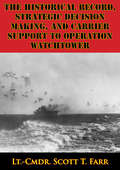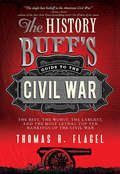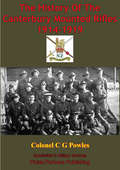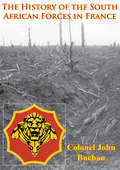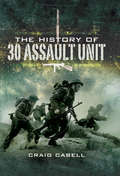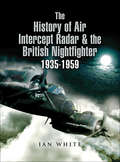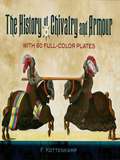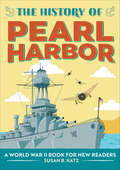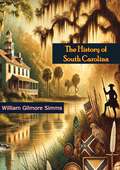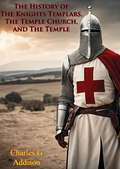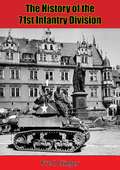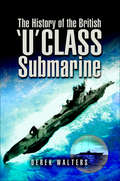- Table View
- List View
The Historical Record, Strategic Decision Making, And Carrier Support To Operation Watchtower
by Lt.-Cmdr. Scott T. FarrThe Battle of Guadalcanal marked the first offensive ground operations conducted in the Pacific theater during World War II. One divisive issue of the Guadalcanal campaign is the withdrawal of carrier based aviation support on 8 August 1942, by Vice Admiral Frank Jack Fletcher. The historical record is dominated by the argument that Fletcher faced very little threat and could have supported the invasion forces longer than he did. What influenced Vice Admiral Frank Jack Fletcher to withdraw carrier based aviation from direct support of the Guadalcanal invasion and was the decision valid? In order to objectively evaluate Fletcher's decision, this paper will first review historical literature and outline how the dominate opinion of Fletcher's decision developed. Next, it will look at Fletcher's character, development as a leader, and record from commissioning through the Watchtower campaign. This study will also review of the orders and guidance at the strategic level and the operations of subordinate commanders within Watchtower. Finally, the metrics of 1942 and the modern strategic military decision-making model will be applied to evaluate the validity of the decision to withdraw. The evidence clearly suggests that Fletcher's decision was strategically valid, in addition to being characterized inaccurately by historians.
The History Buff's Guide to World War II
by Thomas R. FlagelAt a cost of sixty million lives, the largest war in the history of the world devoured cities, gave birth to horrific new weapons, and involved the three worst mass murderers of all time. It also gave rise to some of the finest acts of courage, sacrifice, and lasting change ever to benefit human civilization. World War II stands as the most important event of the modern age, but it is often the most misunderstood. Was it inevitable? Could the Axis have won? Was D-Day the largest invasion ever? Who was the greatest military commander? The worst? Thomas R. Flagel unveils the big picture by using detailed top-ten lists, ranking the best, worst, first, and most significant elements of the largest and deadliest conflict in history. - The Gathering Storm: What caused the war, what made it span the globe and what did people do to try and stop it from coming. - Politics: The most influential speeches, the worst tyrants, and the most important acts of government. - Military Life: The world of unsung soldiers, what they ate, how they lived, and how they died. - The Home Front: Civilians and the hardships they endured, the songs they sang, and the ways they fought back. - In Retrospect: The best commanders, worst mistakes, most decisive battles, and greatest heroines. - Perusing the War: The best avenues for time travel, including historic sites, activities, genealogy, books, and film. - From the rise of Adolf Hitler to the fall of Hiroshima and beyond, The History Buff's Guide to World War II brings a new and compelling perspective to an epoch that fractured the past and formed our world today.
The History Buff’s Guide to the Civil War: The Best, the Worst, the Largest, and the Most Lethal Top Ten Rankings of the Civil War
by Thomas R. FlagelExploring the Civil War can be fascinating, but with so many battles, leaders, issues, and more than 50,000 books on these subjects, the task can also be overwhelming. Was Gettysburg the most important battle? Were Abraham Lincoln and Jefferson Davis so different from each other? How accurate is re-enacting? Who were the worst commanding generals? Thomas R. Flagel uses annotated lists organized under more than thirty headings to see through the powder smoke and straighten Sherman's neckties, ranking and clarifying the best, the worst, the largest, and the most lethal aspects of the conflict. Major sections are fashioned around the following topics: * Antebellum: Investigates the critical years before the war, in particular the growing crises, extremists, and slavery. * Politics: Contrasts the respective presidents and constitutions of the Union and Confederacy, the most prominent politicians, and the most volatile issues of the times. * Military Life: Offers insights into the world of the common soldiers, how they fought, what they ate, how they were organized, what they saw, how they lived, and how they died. * The Home Front: Looks at the fastest growing field in Civil War research, including immigration, societal changes, hardships and shortages, dissent, and violence far from the firing lines. * In Retrospect: Ranks the heroes and heroines, greatest victories and failures, firsts and worsts. * Pursuing the War: Summarizes Civil War study today, including films, battlefield sites, books, genealogy, re-enactments, restoration, preservation, and other ventures. From the antebellum years to Appomattox and beyond, The History Buff's Guide to the Civil War is a quick and compelling guide to one of the most complex and critical eras in American history.
The History Of The Airborne Forward Air Controller In Vietnam
by Lt.-Cmdr. Andrew R. WaltonThe U.S. Department of Defense predicts that ground forces of the future will wage tomorrow's wars by replacing large numbers of personnel and organic firepower for advanced technology and superior maneuverability. Those forces must be prepared to face an unconventional enemy who will operate in small, lethal units interspersed with the civilian population rather than facing coalition forces with massed formations. This scenario of blurred lines of battle and difficulty determining friend from foe resembles very closely what the U.S. military faced in Vietnam.This paper will address the successes and failures of United States airborne forward air controllers (FACs), particularly in Vietnam, and whether combat lessons learned were passed from service to service or historically from conflict to conflict. The FAC mission has not significantly changed since the end of the Vietnam War, and a thorough study of operational and tactical lessons learned by those aircrew will significantly enhance today's FACs ability to find and destroy dispersed enemy forces in a wide array of environments.
The History Of The Canterbury Mounted Rifles 1914-1919 [Illustrated Edition]
by Lt Col C. G. PowlesContains over 60 illustrations and 10 maps."Great War history of a New Zealand cavalry unit which fought as infantry at Gallipoli, and suffered severe casualties. The Canterbury Rifles resumed its mounted roll in Egypt in the desert campaign culminating in taking Jerusalem and Jericho in 1918.The (New Zealand ) Canterbury Mounted Rifles, like other cavalry units, fought dismounted in the Gallipoli campaign and suffered horrendous losses there. After the evacuation of the Gallipoli Peninsular, the unit's remnants were refitted in Egypt and then committed to the Sinai and Palestine campaigns. They took part in the battles of Rafa, Romani and Gaza, and in the advance to Jerusalem and Jericho in 1918. Throughout their time in the desert, they fought in the mounted role for which they had originally been trained. They ended the war after the Armistice by returning to the Gallipoli Peninsular where they had suffered so much. The book is profusely ilustrated by a range of interesting black and white photos; and an appendix on the unit's horses plus a Roll of Honour, list of awards etc."--N&M Print Version
The History Of The South African Forces In France [Illustrated Edition]
by Colonel John BuchanIncludes 22 maps and 18 illustrationsTens of thousands of men came from all round the Empire to aid the British war effort in the First World War; men from Australia, New Zealand, Canada, India and South Africa fought and died on battlefields far away from their homes. Although these soldiers fought across many different countries for the Allied cause; each of the Nations is linked with a single battle or campaign in which their sacrifice stood out even in the horrific bloodshed of the First World War. For the South Africans it was the heroic, bloody struggle for Delville wood during the battle of the Somme; during which they held their ground under a furious counter assault by the Germans, the South African 1st Brigade suffered 80% casualties in that action alone. Basil Liddell Hart called this engagement "...the bloodiest battle hell of 1916."However as the esteemed author and soldier, Colonel John Buchan points out in his introduction to this classic Official History, the South Africans fought with equal bravery and distinction wherever and whenever they took to the field. As he states his book "...is a tale to be proud of, for among the many brigades in that field the South African Infantry Brigade may be said, without boasting, to have had no superior and not many equals."A fitting tribute to the many brave South African soldiers who fought and conquered during the First World War written by an acclaimed author.
The History and Politics of Star Wars: Death Stars and Democracy (Routledge Studies in Modern History)
by Chris KempshallThis book provides the first detailed and comprehensive examination of all the materials making up the Star Wars franchise relating to the portrayal and representation of real-world history and politics. Drawing on a variety of sources, including films, published interviews with directors and actors, novels, comics, and computer games, this volume explores the ways in which historical and contemporary events have been repurposed within Star Wars. It focuses on key themes such as fascism and the Galactic Empire, the failures of democracy, the portrayal of warfare, the morality of the Jedi, and the representations of sex, gender, and race. Through these themes, this study highlights the impacts of the fall of the Soviet Union, the War on Terror, and the failures of the United Nations upon the ‘galaxy far, far away’. By analysing and understanding these events and their portrayal within Star Wars, it shows how the most popular media franchise in existence aims to speak about wider contemporary events and issues. The History and Politics of Star Wars is useful for upper-level undergraduates, postgraduates, and scholars of a variety of disciplines such as transmedia studies, science fiction, cultural studies, and world history and politics in the twentieth and twenty-first centuries.
The History and Science of the Manhattan Project
by Bruce Cameron ReedThe development of atomic bombs under the auspices of the U. S. Army's Manhattan Project during World War II is considered to be the outstanding news story of the twentieth century. In this book, a physicist and expert on the history of the Project presents a comprehensive overview of this momentous achievement. The first three chapters cover the history of nuclear physics from the discovery of radioactivity to the discovery of fission, and would be ideal for instructors of a sophomore-level "Modern Physics" course. Student-level exercises at the ends of the chapters are accompanied by answers. Chapter 7 covers the physics of first-generation fission weapons at a similar level, again accompanied by exercises and answers. For the interested layman and for non-science students and instructors, the book includes extensive qualitative material on the history, organization, implementation, and results of the Manhattan Project and the Hiroshima and Nagasaki bombing missions. The reader also learns about the legacy of the Project as reflected in the current world stockpiles of nuclear weapons.
The History of 30 Assault Unit: Ian Fleming's Red Indians
by Craig CabellThe Second World War spawned a plethora of crack special forces units (Long Range Desert Group, SAS, SBS, Phantom and Commandos) but 30 Assault Unit remains, even today, far more secretive and exclusive than the others. Formed by Ian Fleming, who was working for Naval Intelligence, 30 AUs mission was to penetrate and operate behind enemy lines, capture by whatever means necessary vital intelligence and feed it back to London where it could be assimilated and acted upon. This crack team of commandos included mavericks such as Patrick Dalzel-Job (generally regarded as the model for Flemings fictional secret agent 007), and less well known (despite their conspicuous bravery) figures such as Captains Huntingdon-Whiteley, Captain Martin-Smith. Lieutenant Commander Curtis and Lieutenant McFee. The author has trawled archives and interviewed veterans in order to piece together the history and record of this elusive special forces unit who fought with great distinction and achieved results disproportionate to their size.
The History of Air Intercept Radar & the British Nightfighter 1935–1959
by Ian WhiteREVIEWSan outstanding combination of the many aspects involved with air intercept radar the author is very successful in blending technical, operational and military aspects of the subjects into a very interesting book.Air Power History, Winter 2008
The History of Browning Firearms: A Complete Chronicle of the Greatest Gunsmith of All Time
by David MillerA captivating and wonderfully illustrated chronicle of one of the most influential and legendary names in gunsmithing history. John M. Browning was born in Ogden, Utah, in 1855, into a world of gunsmithing. His father was a gunsmith who was already well known for a number of innovations in the field. As a young boy, John spent hours in his father's shop and allegedly knew the name of every part of a gun before he could read. It's hardly surprising that at age twenty-three, he was filing his first patent for the "J. M. Browning Single-Shot Rifle." Browning inherited his father&’s gun making shop, and with funds of less than a thousand dollars, developed it into a highly successful business that developed several iconic firearms including the Colt Peacemaker. Browning also cooperated with Winchester to develop a whole range of small arms including semi-automatic pistols, single-shot rifles, repeater rifles, and machine guns. His enthusiasm and creativity have led many to believe he is the greatest firearm designer of all time. This fascinating book describes the Browning history, and in addition to covering the full range of inventions and designs, also shows various gun-making artifacts, copies of designers' drawings, and interesting photographs of the weapons in the hands of users. The History of Browning Firearms makes a perfect addition to the libraries of Wild West buffs and firearms enthusiasts.
The History of Chivalry and Armour: With 60 Full-Color Plates
by F. KottenkampFrom his earliest years and throughout his training as squire, a young knight was rigorously instructed in the use of arms. Competing in tournaments honed the skills of knights and squires alike, and provided a keen development of military prowess beyond the dangers of the battlefield. As improvements in defensive armour and weaponry were made, the elaborate decoration of arms also flourished. The trials and jousts of the tournament became more than just a stage for combat as the weaponry itself evolved into a stunning art form. A visual and literary feast, The History of Chivalry and Armour is a study of medieval knights in all their grandeur, fully displaying their instruments of siege, ornaments, and entertainments. Reproduced from a rare nineteenth-century masterpiece, here are the origins, codes, and practices of knighthood, alongside magnificent hand-colored engravings of armour, weapons, and the men who bore them. Enjoy breathtaking shields, helmets, and horse coverings. Revel in meticulously rendered lances, spears, and spiked clubs, as well as incredibly engineered mobile siege towers and muskets. The richly decorated equipment used in warfare and jousting shine brightly in this treasury, accompanied by authentic literature from poets and troubadors of the age.
The History of Dive Bombing: A Comprehensive History from 1911 Onward
by Peter C. SmithThe incredible story of the dive bomber is told through official reports and personal accounts from combat pilots in this sweeping military history.The History of Dive Bombing delves beneath the myths to present an in-depth history. Peter Smith tells the full story of these planes from the first true combat dive bombing by a Royal Air Force pilot in 1917 to the last stirring wartime actions. Interviews with pilots from both World Wars representing all combatant nations give eyewitness viewpoints on many of the major actions and methods employed. From the first dive-bomber missions of World War II, through accounts of British attacks on German warships during the Norwegian campaign, and Stuka missions against the French and British forces, this volume vividly recreates the drama, strategy and tactics of dive bombing. Some well known aircraft types include, such as the Curtiss Helldiver, Aichi D3A1, Blackburn Skua, and the infamous Junkers Ju 87.
The History of Pearl Harbor: A World War II Book for New Readers (The History Of)
by Susan B. KatzExplore the history of Pearl Harbor—the attack that brought America into World War 2On December 7, 1941, the Japanese military launched a surprise attack against the Pearl Harbor naval base in Oahu, Hawaii. The next day, President Roosevelt declared war and America entered into World War 2. Go on a suspenseful journey with this colorfully illustrated story about World War 2 for kids. It takes you through all the events that led up to the attack on Pearl Harbor, the attack itself, and the impact it had on the future of the war.This book about Pearl Harbor and World War 2 for kids includes:A visual timeline—Take a look at all the important details of the Pearl Harbor attack with a timeline marking the major milestones.Core curriculum—Learn the Who, What, Where, When, Why, and How of Pearl Harbor, and take a quick quiz to test your knowledge after you finish this book about World War 2 for kids.Lasting change—Explore thought-provoking questions that help you better understand how the events at Pearl Harbor affected the world you live in today.Learn about "the day that will live in infamy" with this engaging book about World War 2 for kids.
The History of RAF Aerobatic Teams From 1920: Smoke On . . . Go!
by David Watkins"The Royal Air Force has long recognized the value of display flying for pilot training, prestige and recruiting purposes, and the standard of its formation aerobatic teams has always stood favorable comparison with those of air forces of other nations.Aerobatics have always played a prominent part in RAF training. They are not performed merely to provide a spectacle for the public but are an essential step in the making of a pilot, giving him confidence in himself and his aircraft. Formation aerobatics give him the added factor of confidence in his leader and other members of the team.This history of RAF aerobatic teams is the result of many years of painstaking and meticulous research from its early beginnings with five Sop with Snipes at the Hendon Pageant in 1920 to the present day 'Red Arrows'.The book also contains an introduction which details the gradual development from experimental and 'stunt' flying of the early aviators, through the aerial artistry of using smoke to highlight maneuvers and tied-together formation aerobatics, to the introduction of jet teams after the war. Also included in the book is a detailed index listing each team and its members from 1920 and it will undoubtedly provide an essential reference work on Royal Air Force formation aerobatic teams for aviation historians and enthusiasts."
The History of Rain
by Stephens Gerard Malone"Our story begins in 1915. While convalescing in a French army hospital, Rain, a veteran of the Great War now raging across Europe, finds solace in aiding the building’s groundskeeper. An unlikely apprentice gardener, he buries himself in this work. The bulbs, the tubers, and the soil care not that his face is now deformed forever. “I say give the earth your rage, young man, and she’ll give you flowers,” the groundskeeper tells him. And so he does. In the ensuing decadence of the postwar years, Rain finds himself lured into the intricate and lavish world of landscape gardening. In demand to a certain upper-class clientele, he travels the world to create magnificent gardens for clients and, eventually, for the pictures during Hollywood’s Golden Age. But the nomadic nature of his work is also a way for him to chase his unrequited love, Lily. A sprawling story written in stunning, spare language, this anticipated new novel from the master wordsmith behind Big Town and I Still Have a Suitcase in Berlin is a lyrical, magical, and starkly realist meditation on the dissonant worlds that emerge from conflict, and the lengths we’ll go to chase the illusion of love."
The History of Roman Legion VI Victrix: The Original Watchers on the Wall
by Tony SullivanThe first in depth study on the history of Legio VI Victrix in Britain,describing their weapons and armor, as well as the impact on the region's warfare.Brought over from Germany in 122 to assist in the building of Hadrian’s Wall, the Sixth Legion remained in Britain until the end of Roman rule. The book will investigate the changing military organization, weapons and warfare as well as the many auxiliary units posted in the north of Britain.We will meet members of the Sixth Legion known from inscriptions and literary sources. From lowly legionaries helping to build Hadrian’s or the Antonine Wall to Pertinax, tribune of the Sixth, and destined to become Emperor. Case studies will include a praefectus castrorum, Lucius Artorius Castus, along with the legionary bases at York and Corbridge.The men of the Sixth witnessed the tumultuous, and often bloody, history of Roman Britain: the border shifting back and forth under Antoninus; barbarian incursions and army mutinies under the murderous Commodus; the bloody civil war against Septimius Severus and the subsequent invasion of Caledonia. In the last century of Roman rule, the Sixth supported several rival emperors from Constantine the Great, Magnus Maximus until finally Constantine III.The journey will end with a discussion of the likely fate of the Sixth in the early fifth century after the end of Roman authority. A must read for anyone interested in the evolution of the Roman legion, the empire or Roman Britain in particular.“A marvelous introduction to the Roman legion and the military aspects of the Roman empire.” —Historical Miniatures Gaming Society
The History of South Carolina: Battles with the Native Americans, the Revolutionary War of Independence, and Statehood
by William Gilmore SimmsThe History of South Carolina by William Gilmore Simms offers a comprehensive and engaging account of the state’s dynamic past, from its early European exploration and colonization through pivotal battles with Native American tribes, its role in the American Revolution, and the path to statehood. First published in the 19th century, Simms’s narrative combines historical detail with literary flair, creating a vivid portrayal of South Carolina’s transformation from a wilderness frontier into a key player in the formation of the United States.Simms begins with the earliest European encounters, documenting the challenges of colonization and the complex interactions between settlers and Indigenous peoples. He provides an insightful look into the conflicts that shaped early relations, including alliances, skirmishes, and full-scale battles. The narrative then shifts to the Revolutionary War, where South Carolina’s unique geography and fierce resistance played a significant role in securing American independence. Simms vividly describes key events, including the siege of Charleston and the pivotal battles of Cowpens and King’s Mountain, capturing the heroism and hardships endured by patriots and loyalists alike.The book also traces South Carolina’s post-war evolution, exploring its political, economic, and cultural development as it navigated the challenges of statehood. Throughout, Simms weaves personal anecdotes and reflections, offering readers both historical facts and insights into the identity and spirit of the region.The History of South Carolina remains an essential read for those interested in the state’s rich and turbulent past, providing a window into the social, military, and political forces that shaped its early history. With its blend of thorough research and narrative elegance, Simms’s work continues to be a valuable resource for historians, students, and anyone seeking a deeper understanding of South Carolina’s formative years.
The History of Sunnybrook Hospital: Battle to Greatness
by Francesca Grosso<p>Heritage Toronto Book Award — Shortlisted, Non-Fiction Book <p>The story of Sunnybrook is one of perseverance by many dogged pioneers, rebelling and innovating to keep the organization alive. <p>The story of Sunnybrook Health Sciences Centre is one of battle and rebellion in the pursuit of excellence. With the perseverance of many innovators, Sunnybrook endured many battles, forging new directions and becoming stronger and greater. <p> The History of Sunnybrook Hospital: Battle to Greatness brings to life this tumultuous history: as a veteran’s hospital, born of the passionate battles launched by angry citizens to build better hospitals for our Second World War veterans; as a community and teaching hospital, rebelling and innovating to stay alive; and, finally, as a full-fledged academic health sciences centre, struggling to maintain its identity and focus. <p>In The History of Sunnybrook Hospital, you will find the stories of pioneers, rebels, and leaders, and the pivotal events and innovations that have shaped Sunnybrook’s character and legacy.</p>
The History of The Knights Templars, The Temple Church, and The Temple: Large Print
by Charles G Addison“The warrior knights of the crossThe Knights Templar were one of the most famous Christian military orders of the medieval period. Officially endorsed by the church in the early decades of the 12th century the express purpose of the order was to provide defence and protection to Christian pilgrims. The concept became a popular one and with patronage came wealth and power so that the order, through a substantial infrastructure of non-warrior members spread throughout Europe promoting its objectives, developing financial institutions and building fortification on a grand scale. However, the Knights Templar are especially remembered today for the prowess of their military knights. Clad in white mantles bearing the distinctive red cross the Templars both attracted and created some of the most expert and effective fighting men of their time. Naturally, the order was closely connected to the Holy Land and with the Crusades. For some two hundred years it fought the forces of Islam for dominance of Jerusalem experiencing mixed fortunes in dozens of actions and major battles. The eventual loss of the Holy Land could do no other than promote a decline in their fortunes, and indeed, the support for the Templars. Furthermore, the order's wealth and its independent structure, wielding power outside state and church, inevitably made it a target for both suspicion and dissolution. The end came in 1312—in a welter of torture, bloodshed and burnings at the stake. The legend has lived on however, and today the times of Knights Templar are to many more intriguing and evocative than ever.”-Print ed.
The History of Toy Soldiers
by Luigi Toiati&“Amazing . . . A must-have must-read bible for lovers of toy history and in particular toy soldiers. Absolutely glorious!&” —Books Monthly Humans have made and collected toy soldiers from time immemorial. They amuse and comfort us, awaken our curiosity, turn aggressiveness into creativity. In The History of Toy Soldiers, Luigi Toiati, himself an avid collector and manufacturer of toy soldiers, conveys and shares the pleasure of collecting and playing with them. Far from a dry encyclopedia, it leads the reader through the fascinating evolution of the toy soldier from ancient times to the early twenty-first century. The author, as a sociologist with an interest in semiotics (the study of signs), offers truly original insights into why different types of toy soldiers were born in a given period and country, or why in a given size and material. The author&’s writing is packed with factual detail about the different types of toy (and model) soldiers and their manufacturers, but also with anecdotes, nostalgia, wit and his enduring passion for the subject. Six hundred beautiful color photographs, many depicting the author&’s own collection, complete this delightful book. &“Toiati creatively delivers exhaustive details, captivating anecdotes and a sense of nostalgia that exudes the fundamental childhood joy of playing with toy soldiers combined with adult collectors&’ wonderment at their charms.&” —Toy Soldier & Model Figure &“A book that will enter the annals of Toy Soldier collections as one of the best and most complete books on this topic.&” —IPMS/USA &“A great journey of exploration.&” —Miniature Wargaming
The History of the 24. Waffen-Gebirgs (Karstjäger)-Division: and the Holders of the Anti-Partisan War Badge in Gold in the Second World War
by Rolf MichaelisDetailed look into the brutal anti-partisan warfare in Yugoslavia during WWII
The History of the 71st Infantry Division
by Fred ClingerFirst published in 1946, this is an account of 71st Infantry Division’s role in World War II, it was activated on July 15, 1943 at Camp Carson, Colorado. After some time training in the U.S. the division arrived in France in February 1945, entering the line at Ratswiller on 11th March 1945. Thereafter the 71st pushed the German forces back all the way back to the Siegfried Line, capturing Pirmasens 21st March and capturing Bayreuth after bitter opposition on 16th April. The Division had the distinction of having advanced the furthest east of all the U.S. Army units, by which time it had fought numerous bloody engagements and being involved in the liberation of a sub-concentration camp at Gunskirschen.
The History of the Black Watch: and the Caribbean, the Napoleonic ... the Ashanti War and the Nile Expedition
by Archibald Forbes“The first 150 years of one of the British Army's most renowned regiments Archibald Forbes was a notable author, journalist and special correspondent during the British colonial wars of the Victorian era, so he was well positioned by personal experience to pen this history of a famous Scottish Highland regiment. 'The Black Watch, ' 'The Forty-Twa, ' the '42nd Regiment of Foot, ' 'The Royal Highlanders'—First to come, Last to go. The titles of this legendary regiment are many and its fame well and hard earned on many a bloodily contested ground from its birth to the present day. Forbes wrote his own history from the perspective of his own time-—a decade before the close of the nineteenth century. We join the regiment in these pages during the Seven Years War in Europe and in its theatre of the New World—popularly known as the French and Indian War—where the regiment would pay dearly before Ticonderoga. The Black Watch had not done with Indians as it fought to secure the backwoods frontier, notably at Bloody Run and Bushy Run. The American War of Independence was followed by the war against Napoleonic France which would see the regiment in service in Egypt, in battles across the Peninsula, at Corunna with Moore and, as the epoch came to an end with the Emperor's fall, with great loss at Quatre Bras and Waterloo with Wellington. More hard soldiering came in the Crimea and this valiant force was the hand of retribution in the Indian Mutiny. The book closes with encounters with the Ashanti and the expedition to relieve Gordon in Khartoum.”-Print ed.
The History of the British 'U' Class Submarine
by Derek WaltersOriginally designed in 1934 for anti-submarine training, by the end of the war 72 U-Class subs had been commissioned; 17 were lost to the enemy, and 3 in accidents. Manned by crews from seven nations' navies, they served worldwide, and never more successfully than in the Mediterranean. This book is the definitive study of this class of submarine and the men who serve on them.
